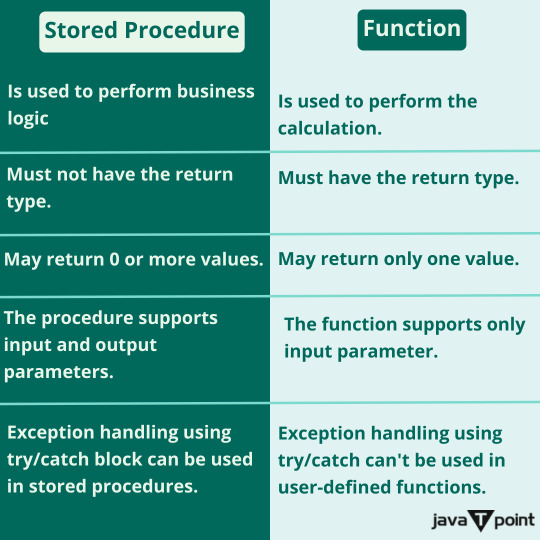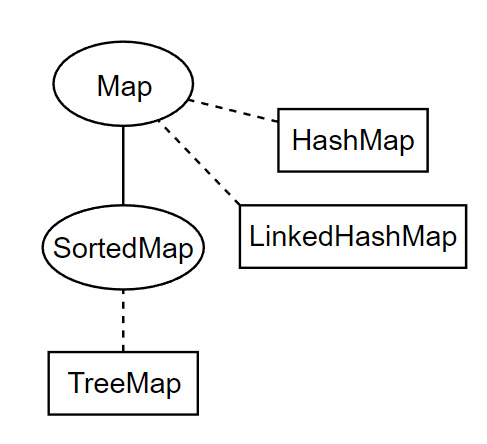#ArrayList
Text
ArrayList Class in Java With Program Example
Arraylist is a child class of AbstractList and implements List interface. It represents dynamic array that can grow or shrink as needed. In case of standard array, one must know the number of elements about to store in advance. In other words, a standard array is fixed in size and its size can’t be changed after its initialisation. To overcome this problem, collection framework provides…

View On WordPress
#arraylist#collection#collection framework#Hierarchy in Collection Framework#java#java program#List interface
2 notes
·
View notes
Text
Pengertian ArrayList Bahasa Java beserta Contohnya
Dalam artikel duniailkom kali ini kita akan membahas apa itu ArrayList dan bagaimana contoh kode programnya. Selain itu akan dijelaskan juga perbedaan Array biasa dengan ArrayList di bahasa pemrograman Java.
Pengertian ArrayList
ArrayList adalah struktur data yang digunakan untuk menyimpan kumpulan data dalam bahasa Java. Berbeda dengan tipe data array biasa, ArrayList memiliki ukuran yang…

View On WordPress
1 note
·
View note
Text

What is the JDBC Rowset?
.
.
.
.
For more questions about Java
https://bit.ly/465SkSw
Check the above link
#blob#clob#function#procedure#resultset#rowset#drivermanager#preparedstatement#execute#executequery#executeupdate#array#arraylist#jdbc#hashMap#computersciencemajor#javatpoint
0 notes
Text
You shall not use linkedlist
I remember my first job where all the java code was specifically using LinkedList. It was a recommendation of my seniors because there might be sizing issues with ArrayList.
I've always kept that in the back of my head as the first years on a job are very formative. I now realise it's not really true, as stated here:
Looking at just these operations on ArrayList and LinkedList, there are clear tradeoffs. Element access in ArrayList is faster, but editing potentially involves copying O(n) elements, which can be expensive. Many people claim that LinkedList has the advantage for editing operations because they are O(1). This is true, but only at the ends of the list, or if you already have the location in the list where you want to do the editing. (Such as with a ListIterator.) If you have to search for the location, or if the index is somewhere in the middle, you have to pay the traversal cost to get to that location.
The kicker here is that traversing through a LinkedList is considerably more expensive than copying the elements of an ArrayList. If we assume that the edit location is uniformly distributed within the list, the average cost of element copying in an ArrayList is around 0.9µs. For a LinkedList, however, the average cost of traversing to a location is over 4µs. There are clearly workloads where a LinkedList will outperform an ArrayList. However, in many cases, the traversal cost of the LinkedList is so much more expensive than the copying cost of the ArrayList, it more than offsets LinkedList‘s O(1) advantage in editing operations.
That’s why I claim that ArrayList is usually preferable, and LinkedList should (almost) never be used.
~ sauce
What I keep from this is that in the end,
early optimisation is the root of all evil
... and you should really only try to fix code where you notice there are preformance problems.
Even today I recommend tha you:
Write readable code
Test it a lot
Measure it
Eventually improve it if there is a real bottleneck
Most often than not, the 4th step is not necessary. Trying to improve your code by making it less readable is a mistake in the first place.
Anyways... back to the LinkedList discussion, I now know there is no reason for me to use it anymore.
0 notes
Text
Разница между ArrayList и LinkedList?
(Они вот вообще не похожи между собой, как этот вопрос смог возникнуть)
ArrayList - это массив, где все элементы расположены в памяти рядом. При удалении из середины или добавлении туда, происходит сдвиг всех элементов влево или вправо соответственно. Поэтому его временная сложность - O(n) (помните предыдущий пост?). Чем больше элементов, тем дольше их двигать. Однако, получение по индексу происходит за неизменное количество времени.
LinkedList уже не использует массив для хранения элементов - они могут быть расположены в памяти где угодно. Но каждый объект знает какие элементы стоят до и после него. Удаление/добавление происходит быстро, потому что двигать ничего никуда не надо - меняются только ссылки у рядом стоящих объектов. А вот время получения по индексу уже зависит от количества объектов, так как надо просмотреть каждый элемент, прежде чём найти нужный.
Часто искать по индексу? - ArrayList
Много вставлять/удалять? - LinkedList
Ну, надеюсь, понятно.
0 notes
Text
Help my stupid code wont work
#supposed to make an array#private ArrayList<String> nameList = new ArrayList<String>();#but nameList.add(‘’ word ‘’);#wont work#+ i can’t get the awt list to display anything before pressing any buttons#i can’t just .setText(‘’’’) it because idk#<33#ranting bc i have been on and off crying trying to figure this out#tutorials arent making sense to me#and the folder we’re supposed to use as a guide doesn’t work
1 note
·
View note
Text
I'm so sorry I doubted you programming, you weren't really that difficult please come back
^--- *has to still write a third of stopwatch in hardware description language*
#tetranymous.txt#arraylists and recursion are nothing compared to programming but not really#its like programming except its individual wires in a chip AND all tge syntax is weird#on the upside at least assembly will seem easy in comparison once i get around to that#honestly the worst part is i could drive a seven seg display in a couple of minutes on an arduino. this is taking HOOOUUUUUURS
0 notes
Text
I love sitting here being baffled by the fact I made an infinite loop with an ITERATIVE FOR LOOP.
That’s some skills right there of being a dumbass
#in my defence I haven’t used arraylist in a hot sec#and my dumbass brain was like. yeah. if I add to a list at a certain index#that won’t ADD TO THE LIST. that’ll REPLACE SHIT#like. babe no#so anyways cue me questioning all my life choices rewriting a nested for loop bc I thought I was actually dumb as shit#then realizing that was the issue#anyone who’s not caught the issue- if I’m adding to the list every iteration then it never hits the limit#if I want to stop the loop at the end of a list but I keep making the list longer it’s never going to reach the end bc it’s iterating and#growing at the same rate#y’all so smart anyways spend and hour on that but have fixed it now my god#Idk if I even need half the code I just wrote so big brain energy this morning
0 notes
Text
Array Vs Lists in Java (With Examples)
Define List In Java
In Java, A List is an ordered collection of an object in which values can be stored. It allows insertion, delete, update and positional access elements in list with index number. List created by the following classes(ArrayList, LinkedList , Stack, Vector).
The list method is found in java.util.List package. using this package we can iterate list in forward and backward directions. The implementation of classes of list are ArrayList, LinkedList, Stack, vector. The arrayList and linkedList are widly uesd in java. The vector class is deprecated scince java5
How to create a List in JAVA
Implementation of Array List:-
Syntax: List<String> lst1=New ArrayList<>();
Implementation of Linked List:-
Syntax: List<String> lst2=new LinkedList<>();
Different types of Methods of List in Java.
Some of List methods are commonly used in java are:
add() - It is used to add new Element in a list.
addAll()- It is used for add all elements of a list to a new list.
get() - It is used to access any element in a list.
set() - It is used for change element in a List. (More)
#arraylist in java#arrays in java#array in java#arraylist in java with examples#array#array list#java arrays#array list in java#dynamic array#arrays#disadvantages of arrays in java#arraylist in java example#arrays and collections in java#linked list vs array list java#arraylists in java#array tutorial in java#shifting in array list#java array#collection framework in java#linkedlist in java#difference between array and arraylist in java
0 notes
Text
It’s a personality thing but I really told myself to just do the headlines and then saw one interesting problem and just sat there. I’ve been solving shit for almost two hours which was supposed to be 30 minutes max. The content portions are grating at my current mental but looking at code, checking what’s needed in order to make it work a certain way. That’s triggered the ‘I need answers, not ___’ phase.
#x-#t#week2#now the good thing is that I got through almost half of content and challenges for Monday morning#the not so great is that I am delaying getting life stuff done tomorrow#but at least it also means that i could get into a zone on monday morning if zapped friday night me can get through almost half of it#it was java arraylists - i haven’t quite gotten to the list interfaces part or linked list yet
0 notes
Text
Printing an array in java with example
In this article, we will discuss printing an array in java using different methods like using loop, without loop, 2d array, and array in reverse with source code and output of that.
#1. Printing an Array in Java using for loop
A. Explanation of the source code
The code snippet below demonstrates how to print an array in Java using a for loop. The for loop iterates through the elements of the…

View On WordPress
#Printing a 2D Array in Java#Printing a Byte Array in Java#Printing an array#Printing an array in java#printing an Array in Java using for loop#Printing an Array in Java without a Loop#Printing an Array in Reverse Order in Java#Printing an ArrayList in Java
0 notes
Text

it's coming along great 👍
#thorn post#both of those classes are functional. there's an arraylist kicking around. i'm using so many decision structures
0 notes
Text
Decoding Complexity: Mastering UML with Expert Guidance

Welcome to the realm of UML, where abstract ideas meet concrete solutions, and the language of diagrams speaks volumes. At DatabaseHomeworkHelp.com, we understand the challenges that come with UML assignments, and our experts are here to guide you through even the toughest topics. In this blog, we'll explore a complex UML topic, provide master-level sample questions and answers, and demonstrate how our experts can provide the assistance you need. If you find yourself saying, "Help with UML homework," you've come to the right place.
Topic: "Dynamic Modeling with Sequence Diagrams in UML"
Dynamic modeling in UML, specifically through sequence diagrams, offers a powerful way to visualize the interactions and flow of messages between objects in a system. Let's delve into some master-level sample questions and answers to showcase the depth of this topic.
Sample Questions:
1. Design a sequence diagram for an online shopping system where a user adds items to the cart, proceeds to checkout, and completes the purchase. Highlight user interactions and system responses.
Answer:
uml
@startuml actor User participant Cart participant Checkout participant Payment User -> Cart: Add items to cart activate Cart Cart -> Checkout: Proceed to checkout activate Checkout Checkout -> Payment: Complete purchase activate Payment Payment --> Checkout: Confirmation deactivate Payment Checkout --> Cart: Confirmation deactivate Checkout Cart --> User: Order confirmation deactivate Cart @enduml
2. Implement a Java code snippet for a class involved in the sequence diagram above, demonstrating the handling of cart operations.
Answer:
java
public class ShoppingCart { private List<Item> items = new ArrayList<>(); public void addItem(Item item) { items.add(item); } public List<Item> getItems() { return items; } // Other relevant methods... }
3. Explain the use of asynchronous messages in a sequence diagram and provide an example scenario where they are beneficial.
Answer: Asynchronous messages in UML sequence diagrams represent interactions where the sender does not need to wait for a response. For example, in a messaging system, a user might send a message to another user without waiting for an immediate reply. This non-blocking communication allows for increased system responsiveness and efficiency.
How Our Experts Can Help:
At DatabaseHomeworkHelp.com, our expert team consists of seasoned professionals with extensive experience in UML and dynamic modeling. When you seek help with UML homework, you benefit from:
Expertise in UML: Our team is well-versed in UML concepts, ensuring accurate and comprehensive assistance.
Customized Solutions: We tailor our solutions to your specific requirements, ensuring that your UML assignments meet the highest standards.
Code Proficiency: Our experts are not only adept at creating diagrams but are also skilled in implementing code, bridging the gap between UML and practical application.
Timely Delivery: We understand the importance of deadlines, and our experts work diligently to deliver solutions promptly.
Dynamic modeling with sequence diagrams is undoubtedly a challenging aspect of UML, but with the right guidance, it becomes a manageable task. At DatabaseHomeworkHelp.com, we pride ourselves on offering top-notch assistance for UML assignments. If you find yourself struggling with dynamic modeling or any other UML concept, simply say, "Help with UML homework," and let our experts guide you to success.
8 notes
·
View notes
Text

What are the differences between stored procedure and functions?
.
.
.
.
For more questions about Java
https://bit.ly/465SkSw
Check the above link
#blob#clob#function#procedure#resultset#rowset#drivermanager#preparedstatement#execute#executequery#executeupdate#array#arraylist#jdbc#hashMap#computersciencemajor#javatpoint
0 notes
Text
Software Technical Interview Review List
Data Structures
Arrays (and Java List vs ArrayList)
String
Stack
Queue
LinkedList
Algorithms
Sorting (Bubblesort, Mergesort, Quicksort)
Recursion & Backtracking
Linear and Binary Search
String/Array algos
Tree traversal
Dynamic Programming
Graph algos (DFS, BFS, Dijksta's and Kruskals)
OOP fundamentals
Polymorphism
Inheritance
Encapsulation
Data abstraction
SOLID and GRASP
Explanations & example questions:
Strings and Arrays [ 1 | 2 | 3 | 4 | 5 | 6 | 7 | 8 ]
Stacks and Queues [ 1 | 2 ]
LinkedList [ 1 | 2 ]
Sorting & searching [ 1 | 2 | 3 | 4 | 5 | 6 | 7 ]
Recursion and Backtracking [ 1 | 2 | 3 | 4 ]
Dynamic Programming [ 1 | 2 | 3 | 4]
Graphs [ 1 | 2 | 3 ]
Tree [ 1 | 2 ]
General DS&A info and questions [ 1 | 2 | 3 | 4 | 5 ]
OOP review & questions [ 1 | 2 | 3 ]
#ive been procrastinating this coding assessment for my interview so bad 😭😭#im just scared of messing up cause i need this internship#But its due soon so im really buckling down now >:)#object oriented programming#algorithms#data structures#software engineering#ref#resource#mypost
8 notes
·
View notes
Text
Коллекции?
Если коротко, то
Существует несколько типов коллекций (интерфейсов):
List - упорядоченный список. Элементы хранятся в порядке добавления, проиндексированы.
Queue - очередь. Первый пришёл - первый ушёл, то есть элементы добавляются в конец, а удаляются из начала.
Set - неупорядоченное множество. Элементы могут храниться в рандомном порядке.
Map - пара ключ-значение. Пары хранятся неупорядоченно.
У них есть реализации.
Реализации List
ArrayList - самый обычный массив. Расширяется автоматически. Может содержать элементы разных классов.
LinkedList - элементы имеют ссылки на рядом стоящие элементы. Быстрое удаление за счёт того, что элементы никуда не сдвигаются, заполняя образовавшийся пробел, как в ArrayList.
Реализации Queue
LinkedList - рассказано выше. Да, оно также реализует интерфейс Queue.
ArrayDeque - двунаправленная очередь, где элементы могут добавляться как в начало так и в конец. Также и с удалением.
PriorityQueue - элементы добавляются в сортированном порядке (по возрастанию или по алфавиту или так, как захочет разработчик)
Реализации Set
HashSet - элементы хранятся в хэш-таблице, в бакетах. Бакет каждого элемента определяется по его хэш-коду. Добавление, удаление и поиск происходят за фиксированное количество времени.
LinkedHashSet - как HashSet, но сохраняет порядок добавления элементов.
TreeSet - используется в том случает, когда элементы надо упорядочить. По умолчанию используется естественный поря��ок, организованный красно-чёрным деревом. (Нет, я не буду это здесь объяснять, не заставите)
LinkedList - рассказано выше. Да, оно также реализует интерфейс Queue.
ArrayDeque
Реализации Map
HashMap - то же самое что и HashSet. Использует хэш-таблицу для хранения.
TreeMap - тоже использует красно-чёрное дерево. Как и TreeSet, это достаточно медленно работающая структура для малого количества данных.
LinkedHashMap. Честно? Тяжеловато найти информацию про различия с LinkedHashSet, кроме того, что один - это Set, а второй - Map. Мда :/
А связи всего этого выглядят так

Овалы - интерфейсы;
Прямоугольники - классы;
Здесь видно, что начало начал - интерфейс Iterable, ну а общий для всех интерфейс - Collection (Не путать с фреймворком Collections)
А где Map? а вот он

Map не наследуется от Collection - он сам по себе.
К этой теме также можно много чего добавить: устройство красно-черного дерева, работа HashSet'ов и HashMap'ов под капотом, сложность коллекций. Но это всё темы для следующих постов.
Ну, а пока надеюсь, что понятно.
#студент бормочет#List#Set#Queue#Map#ArrayList#LinkedList#ArrayDeque#PriorityOueue#HashMap#HashSet#LinkedHashMap#LinkedHashSet#TreeMap#TreeSet#как же много тегов#Коллекции
0 notes